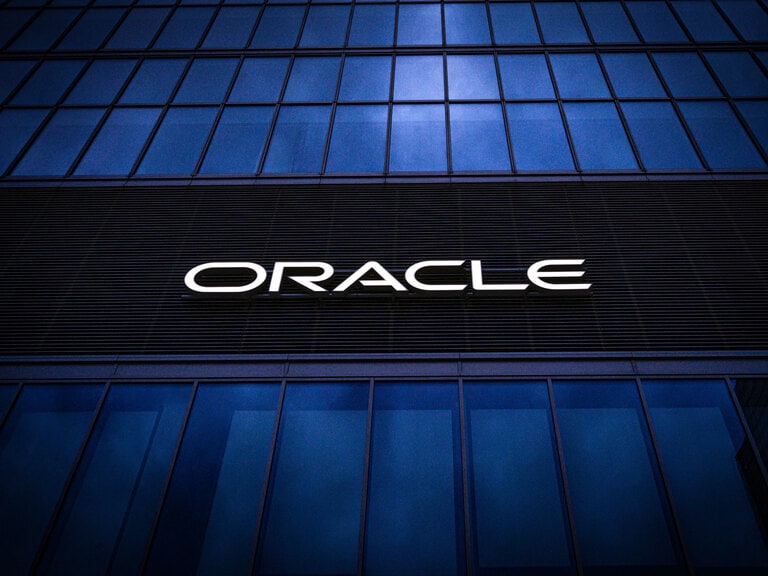While some lithium stocks are currently benefiting from a market recovery, the ‘white gold’ rush driven by the demand for electric vehicles is pushing the lithium industry towards an oversupply of the commodity.
- Australian lithium producers Liontown Resources and Azure Minerals have seen their stocks soar in 2023.
- Lithium prices could fall in 2024 and 2025 amid an oversupply, followed by a deficit through to 2030.
- The Global X Lithium ETF is down 9% in the past six months.
Lithium and spodumene prices rose throughout 2022, as demand — accelerated by the electric vehicle (EV) industry — outstripped weaker-than-expected supply growth. By contrast, this year prices have fallen, largely as a result of weak consumer confidence.
Despite the price drop bottoming in April, some of the world’s top lithium producers are taking near-term growth uncertainty as an opportunity to go acquisition-hunting. According to Reuters, emerging producers in Australia are attracting particular interest as companies are keen to avoid paying for listed producers, whose valuations have been soaring as the market recovers.
One example is Liontown Resources [LTR.AX]. As of last week, the leading Australian producer had seen its share price surge 105% after rejecting three buyout bids from Albemarle [ALB] in the space of five months, data compiled by Bloomberg shows. Meanwhile, the Azure Minerals [AZS.AX] share price has rocketed 988.9% year-to-date through 29 August.
At the same time, other lithium stocks have tumbled, reflecting the volatile nature of the industry, where stocks can rise sharply on new discoveries but crater on negative news. The Laketown Resources [LKE.AX] share price is down 73.13% year-to-date as of 29 August, after announcing in June that its flagship project in Argentina will be delayed by six years.
The direction lithium stocks take next is likely to hinge on the supply–demand balance.
Mixed Fortunes
Following its second quarter (Q2) 2023 earnings in early August, Albemarle raised its total annual revenue forecast from a range of $9.8bn–11.5bn to $10.4bn–11.5bn, with an anticipated increase in sales of 40–55% in 2023. The US producer is expecting lithium prices to rise slightly as supplies are squeezed through the end of the year.
“There’ll be significant demand growth in the market, and indeed, there will be more supply growth as well, but those two will be fairly matched… It will be a fairly tight market,” said Albemarle’s President of Lithium Eric Norris on the earnings call.
Chilean mining giant Sociedad Química y Minera de Chile [SQM], which made an offer to buy Azure Minerals in July, reported an approximately 21% year-over-year (y-o-y) drop in earnings in Q2 as a result of falling prices. However, the company expects lithium sales to be higher in the second half of the year.
“We continue to see strong fundamentals behind lithium demand growth, with global EV sales showing another strong performance during Q2, increasing 50% year-on-year,” commented SQM CEO Ricardo Ramos on an earnings call in mid-August.
Prices to Fall in the Near- to Medium-Term
The price movement for the rest of 2023 is going to depend on the supply–demand balance. Going into 2024 and 2025, Matthew DeYoe, Director of Bank of America (BofA), who covers chemicals and agriculture including US lithium, forecasts prices will drop due to an oversupply of the commodity as a result of mine expansions and more facilities coming online.
New companies are incentivised to ramp up production quickly, compared to incumbent majors that may take a more measured approach to bringing products to market, and this is leading to a “fragmentation of the supply base”, according to DeYoe. On top of this, Chinese producers can bring sites online more quickly than in the West because of looser permitting rules.
DeYeo expects supply to increase by over 745,000 metric tonnes over 2024 and 2025, versus demand of 620,000 metric tonnes, driven by EV sales of 26 million, up from approximately 15 million in 2023.
Supplies Could Be Squeezed By 2030
Looking further into the future, DeYeo sees a potential supply deficit between 2027 and 2030. Although this is not a certainty, the fact that lithium projects can take five to 10 years to come online means that any undersupply in 2019 and 2020 — during which time mine expansion may have been halted — could mean tighter markets in 2027 and 2028. “It’s hard to make calls that many years out given how quickly some of this stuff moves,” he added.
Regardless, Albemarle is already thinking about how it can secure enough supply to meet demand post-2030 to ensure that the company is not vulnerable to a supply squeeze. The lithium producer has hinted that it is open to acquiring more resources.
“We're pretty much good to about the end of the decade or so and we need additional resources beyond that,” Kent Masters, Chairman, President and CEO of Albemarle, said on the August earnings call, adding that this should give the company enough time to “identify, qualify and then bring a resource on”.
More Effective Lithium Extraction Needed
As more companies look to lock in their future supplies, there will likely be increased interest and investment in new and more effective ways to speed up the extraction of lithium.
Direct lithium extraction (DLE), described by Goldman Sachs analysts as “a potential game changing technology”, improves the process of extracting the commodity from brine deposits.
Dave Snydacker, founder and CEO of Lilac Solutions, one of the companies working on DLE, told CNBC in June, that “[T]he auto industry requires a 20 [times] increase in lithium supply, and there’s just no way to achieve that type of growth with conventional technologies.”
How to Invest in Lithium
ETFs, or exchange-traded funds, offer an economical and diversified way to invest in a variety of stocks within a particular theme.
Funds in Focus: Global X Lithium ETF
The Global X Lithium ETF [LIT] currently has Albemarle as its top holding. The fund has allocated 40.7% of its portfolio to the materials sector, with 27.4% allocated to consumer discretionary. Industrials and information technology have weightings of 16.1% and 15.8%, respectively. The fund is up 2% year-to-date through 29 August but down 6.26% in the past six months.
The iShares Lithium Miners and Producers ETF [ILIT] currently has Liontown Resources as its top holding. The portfolio is weighted overwhelmingly in favour of the materials sector (93.07%), with industrials accounting for the remainder. The fund is down 19.2% since its launch on 3 July.
The Amplify Lithium and Battery Technology ETF [BATT] allocated 15% of its portfolio to the lithium industry, while the EV industry accounts for 24% and battery technology has a 20% weighting. The fund is down 17.55% in the past year and down 3.59% in the past six months.
Disclaimer Past performance is not a reliable indicator of future results.
CMC Markets is an execution-only service provider. The material (whether or not it states any opinions) is for general information purposes only, and does not take into account your personal circumstances or objectives. Nothing in this material is (or should be considered to be) financial, investment or other advice on which reliance should be placed. No opinion given in the material constitutes a recommendation by CMC Markets or the author that any particular investment, security, transaction or investment strategy is suitable for any specific person.
The material has not been prepared in accordance with legal requirements designed to promote the independence of investment research. Although we are not specifically prevented from dealing before providing this material, we do not seek to take advantage of the material prior to its dissemination.
CMC Markets does not endorse or offer opinion on the trading strategies used by the author. Their trading strategies do not guarantee any return and CMC Markets shall not be held responsible for any loss that you may incur, either directly or indirectly, arising from any investment based on any information contained herein.
*Tax treatment depends on individual circumstances and can change or may differ in a jurisdiction other than the UK.
Continue reading for FREE
- Includes free newsletter updates, unsubscribe anytime. Privacy policy






